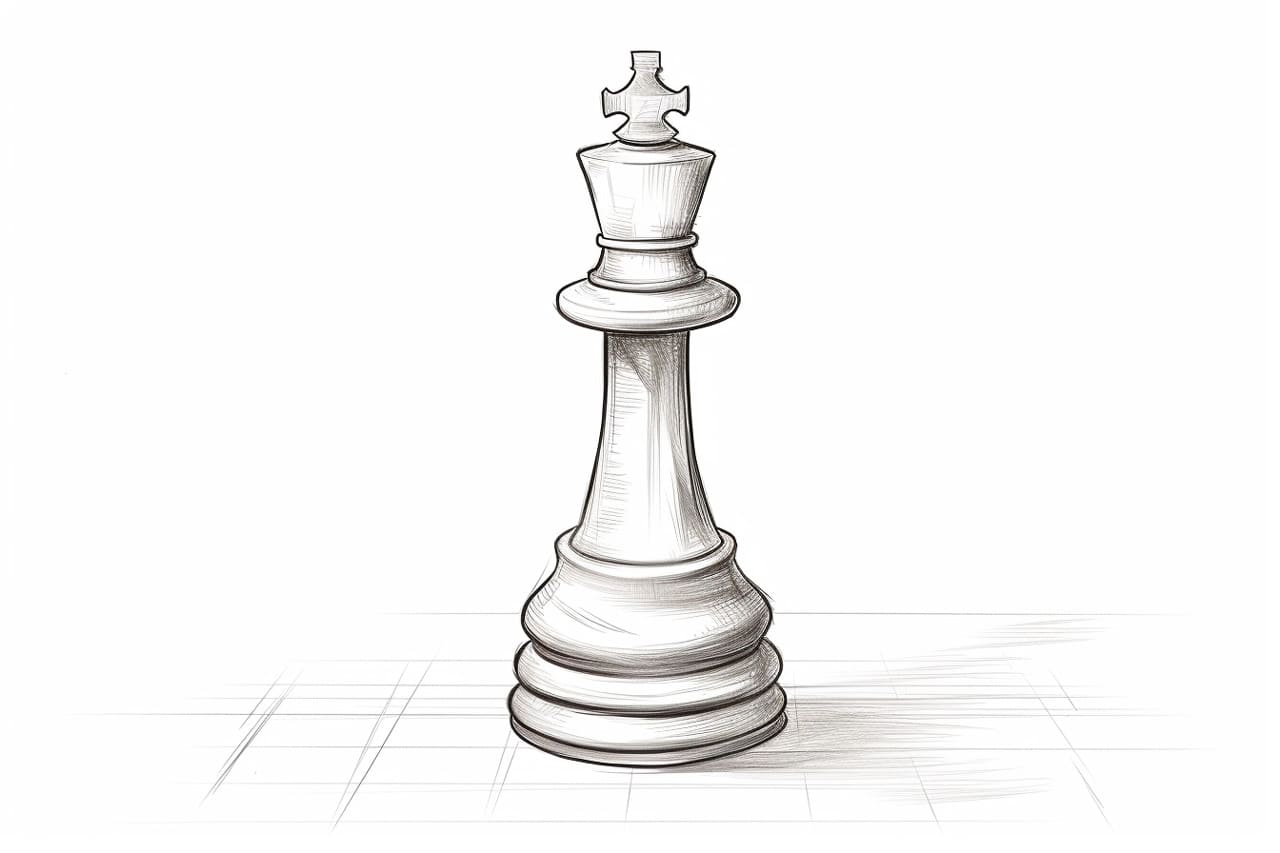Welcome to this step-by-step guide on how to draw a chess piece! Whether you are a beginner or an experienced artist, this tutorial will help you create a realistic and detailed chess piece that you can be proud of.
Chess pieces are iconic symbols that represent strategy, intellect, and the ancient game of chess. Each piece has a unique shape and design, which makes them interesting subjects to draw. So, let’s get started!
Materials Required
To draw a chess piece, you will need the following materials:
- Paper
- Pencil
- Eraser
- Ruler
- Compass or circular template (optional)
- Fine-tipped markers or colored pencils (optional)
Now that you have all the materials ready, we can begin the drawing process!
Step 1: Planning and Sketching
Before you start drawing the chess piece, it’s important to plan your composition and make a rough sketch. Decide on the type of chess piece you want to draw, such as a pawn, knight, or queen. Consider the angle and position of the piece.
Start by lightly sketching basic shapes and lines to outline the overall form of the chess piece. Use simple geometric shapes like circles, rectangles, and triangles as building blocks for your drawing. Focus on capturing the proportions and basic structure of the piece.
Step 2: Defining the Shape and Form
Once you have the basic sketch, it’s time to define the shape and form of the chess piece. Start by refining the outlines and adding more details to the main body. Pay attention to the curves, angles, and contours of the piece. Use your ruler or circular template to create clean and precise lines.
If you are drawing a pawn, make sure to include the distinctive shape of its head and body. If you are drawing a knight, emphasize the unique silhouette and the intricate details of its armor. For other pieces like the queen or rook, focus on capturing their specific features and proportions.
Step 3: Adding Details
Now it’s time to add more details to your chess piece. Pay close attention to the intricate elements that make each piece unique. If your piece has a crown, draw the intricate design carefully. If it has a handle or a finial, depict it with precision.
Use your ruler and compass to create symmetrical lines and shapes. Don’t be afraid to erase and fix any mistakes along the way. Take your time to ensure that the details are accurately represented.
Step 4: Shading and Texturing
To make your chess piece look more three-dimensional and realistic, it’s important to add shading and texturing. Determine the direction of the light source and create shadows accordingly. Use hatching and cross-hatching techniques to add depth and volume to your drawing.
Pay attention to the material of the chess piece. If it’s made of wood, add wood grain textures using short parallel lines. If it’s made of metal, depict the reflections and highlights to give it a shiny appearance. Experiment with different shading techniques to achieve the desired effect.
Step 5: Final Touches
Once you are satisfied with the shading and detailing, it’s time for the final touches. Take a step back and assess your drawing as a whole. Make any necessary adjustments or corrections.
If you want to add color to your drawing, you can use fine-tipped markers or colored pencils to bring your chess piece to life. Refer to reference images or real chess pieces to accurately choose the colors and tones.
Conclusion
Congratulations! You have successfully learned how to draw a chess piece. By following these step-by-step instructions, you can create a beautiful and realistic representation of any chess piece you desire. Remember to practice regularly and experiment with different styles and techniques to further develop your artistic skills.
Drawing chess pieces can be a challenging yet rewarding experience. It allows you to enhance your observation skills, attention to detail, and patience. So, grab your pencil and paper, and start drawing your favorite chess piece today!









